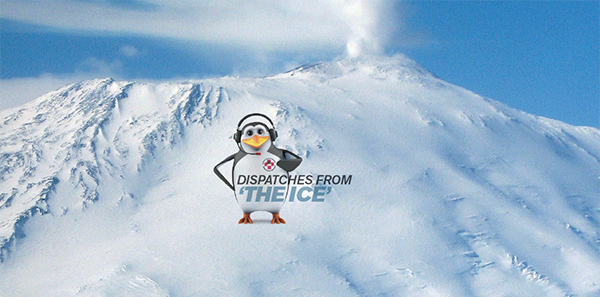
Of course, you’re greeted by the indigenous population with native dances and flower leis. Just kidding! (The second most common Antarctica question I get is about the indigenous population.) The largest indigenous life forms in Antarctica are nematodes (roundworms) that are found in a few areas of the continent. Mostly, there are microorganisms but no insects. The only people on the continent are scientists and their support teams. The number varies, from around 4,400 in the “summer” months of October through February to around 1,100 during the Antarctic winter. Although many countries have Antarctic research stations, the only ones with at least 100 people during the peak months include Argentina, Australia, Chile, France, Italy, Japan, Russia, the United Kingdom, and the United States.
Explore This Issue
ACEP Now: Vol 35 – No 03 – March 2016I bundled up and emerged from the plane to climb onto Ivan the Terra Bus, which takes us to general orientation in the dining hall. The dining hall, which also serves as the community center for group activities, is spacious enough to accommodate the large summer population. As the winter crew, we make a small dent in the space, spreading out to be comfortable and to sit with the people we know. Outgoing staff drone through the orientation that they’ve been giving at least twice a week throughout the summer. It sounds like every other orientation you’ve ever heard, with most people too tired even to take in the important information.
Then comes the vital stuff: getting room assignments and keys and doing the “bag drag” to get your luggage to your room. I met briefly with the outgoing summer medical-dental crew but started official on-Ice medical equipment and procedure orientation the following day. I went back to the building that houses my room and tried to unpack a few things. I was tired enough that I considered just lying down on the unmade bed and going to sleep, but I had enough stamina to make the bed and even go for a quick meal before I crashed for the night.
To get from the building where I live to the medical building, I subscribe to the common McMurdo truism, “The shortest path from one place to another on the station is through a heated building.”
Waking up is a bit tough since McMurdo time is four hours earlier (and one day later) than in my hometown of Tucson, Arizona. However, after my morning ablution, I climbed back into my ECW gear to make my way over to the dining hall for breakfast. The buildings we live and work in are warm enough, so wearing normal clothing plus some long underwear suffices to keep us toasty. To get from the building where I live to the medical building, I subscribe to the common McMurdo truism, “The shortest path from one place to another on the station is through a heated building.” This first morning’s breakfast is good, hot, and plentiful. We’ll see how it goes as the season progresses and fresh food disappears from the menu.
Getting to Work
From there, I headed over to the hospital/clinic to meet up with both my nurse practitioner partner and the South Pole crew to orient on the X-ray machine (we take our own films), the very modern ultrasound, the new defibrillator/monitors, the dental materials and equipment (I’m also the “dentist”), the pharmacy, and the maintenance equipment such as the medical sterilizer. We also learned the current procedures for obtaining telemedical consultations, completing the ever-present forms, and making periodic connections with our home base at University of Texas Medical Branch in Galveston.
Pages: 1 2 3 | Single Page





No Responses to “Cold Temperatures Greet Emergency Physician Spending Winter in Antarctica”